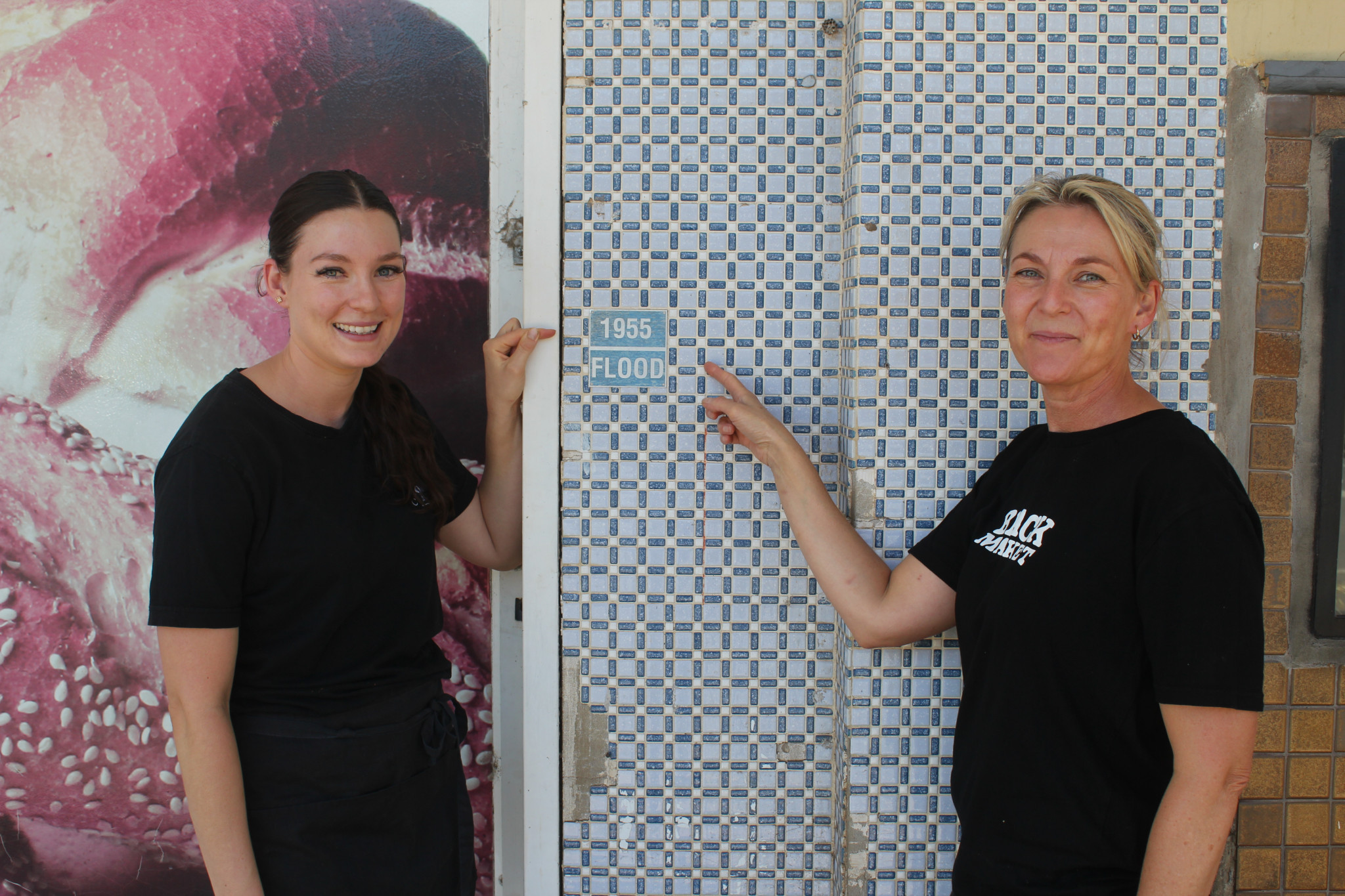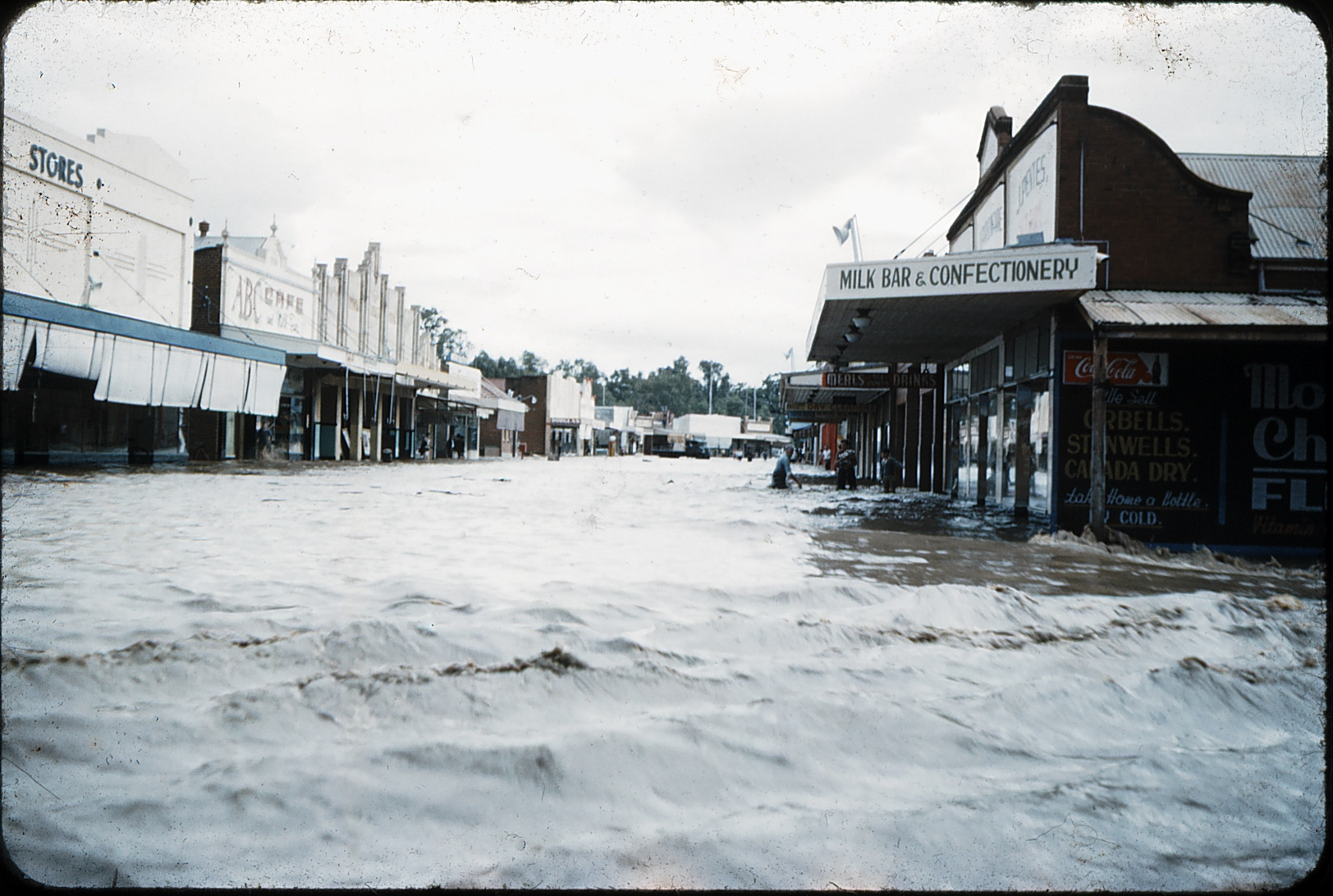General News
27 February, 2025
70 years since historic 1955 flood
The once-in-a-century event ruined livelihoods, caused millions of dollars in damage, and sadly claimed 25 lives. Flooding impacted an area of NSW larger than England and Wales, creating an inland sea—further than Bourke, stretching down to Maitland and Sydney beyond.

What happened?
Heavy rain had been falling over the Hunter River catchment and surrounds since October of 1954. On February 23, 1955, an intense monsoon storm formed over northern NSW, moving south.
Over the Hunter and Darling Rivers, rainfall was the highest since instrumental records began in 1885.
Preceding the flood, in 1954, Gilgandra received 621.8 millimetres (mm) of rain, and the 1955 total was 950.4mm. A third of that total (379.2mm) fell in February alone.
Gilgandra and the surrounding districts received up to 250mm in the 24 hours before the flood. On the afternoon of February 24, 1955, the Castlereagh River broke its banks by the tennis courts, and water descended upon Gilgandra.
It started as a trickle but quickly turned into a deluge.
Gilgandra was still recovering from another damaging flood five years earlier, in April 1950.
Miller Street was submerged under 1.7 metres of rushing water, inundating 300 homes and dozens of local businesses with the horrible brown floodwater.
Despite already preparing for a flood, the town was taken by surprise by the speed and volume of water.
J.B. Sword, the shire clerk, reported that on Wednesday, February 23, 1955, the height of the water at the bridge over the Castlereagh River was only “two feet” (0.6 metres) at 5 p.m. By 9 a.m. the next morning, the water had risen to 5.2 metres, and by 4:20 p.m. on February 24, it had reached 8.4 metres. By 10:30 p.m., the water was almost 10 metres high.
Local Impacts
People caught in the flood are known to have spent the night up trees and on the roofs of buildings, their whereabouts unknown to their families waiting on higher ground.
Crops were destroyed, and livestock perished, with some 2,000 cattle and many thousands of other livestock drowning in the flood, ruining the livelihoods of many landholders.
The area known as ‘Tin City’, on the eastern side of the Castlereagh River, where Aboriginal people lived, was decimated.
At Curban, the hall and church were carried away by water. Another 300 homes were waterlogged in Mendooran, and 20 homes were flooded in Armatree. A large sinkhole opened up in Morris Street, Gilgandra, where two semi-trailers were later discovered.
The raging Castlereagh River tore away the fabric of Gilgandra. Over a third of all buildings in the town were swept away or otherwise destroyed. The damage to bridges, roads, railways, and telephone lines took months to repair.
Two men were killed during the flood in Gilgandra: Edward Ryan and Edward Hobbs. It is understood that Mr. Hobbs was crushed by the weight of the windmill he was using as a refuge. Mr. Ryan, the racecourse caretaker, was thought to be in his house when it collapsed and was then washed away in floodwater.
Heroic Acts
Dubbo Police Constable Bill Stevens and local residents John and Bobby Walker were responsible for many heroic rescues during the flood.
Constable Stevens was awarded the Queen’s Commendation for Brave Conduct on May 9, 1956, and received a Police Long Service and Good Conduct Medal on May 12, 1960.
The Walkers were awarded a Royal Shipwreck Relief and Humane Society of NSW award at the recommendation of Constable Stevens.
The Aftermath
In the wake of the flood, neighbours rallied together to recover and resettle. Residents were moved up to higher ground at ‘The Pines’ settlement, and temporary accommodation sheds were built along Deri Street and Warrie Street. These sheds were later replaced by commission houses. The first resident to be given the keys to their house was Mrs. S. Hobbs, the widow of Edward Hobbs, who was killed in the flood, along with her two children.
Supplies and relief were delivered to Gilgandra by The Salvation Army, and airdrops were conducted around the region by the RAF. Once the waters had settled, a message from Pope Pius XII arrived. The State Governor, Sir John Northcott, toured the affected areas, including Gilgandra.
Waters began to slowly recede statewide on February 28, but the flood emergency did not end in most affected areas until the following weeks.
Volunteers, both local and from afar, did whatever was needed for the region. The Local Fire Brigade and Forestry Fire Units, along with those from across western NSW, worked tirelessly, pumping water from the river to wash out premises.
Thanks to these volunteers, and others who arrived with shovels, bulldozers, scoops, and trucks, a sense of normalcy returned to local streets just 13 days after the flood. The cleanup in Gilgandra took many weeks to finish, and even years later, mud and debris were still being found scattered throughout the town.
The Birth of the SES
Floods are an inevitable part of living next to a river, and they still are today. The 1955 flood shocked the nation with its widespread devastation, becoming the worst flood in Australian history. Many towns were cut off from supplies, with damage impacting roads, railways, telephone lines, and electricity. The Hunter Valley, and Maitland in particular, suffered the worst damage.
In direct response to the many lives lost, the NSW State Emergency Service (SES) was formed in the months following the 1955 flood. That organisation also commemorates its 70th anniversary this year, with local units expected to be involved in various activities around the state throughout 2025.
The Burrendong Dam was finally completed in 1967, 21 years after construction first began. It has since been credited with preventing further catastrophic flooding.
Seventy years on, ‘The Big Flood’ remains a defining moment in Australian history and, certainly, in the lives of those in central west NSW who lived through it.




